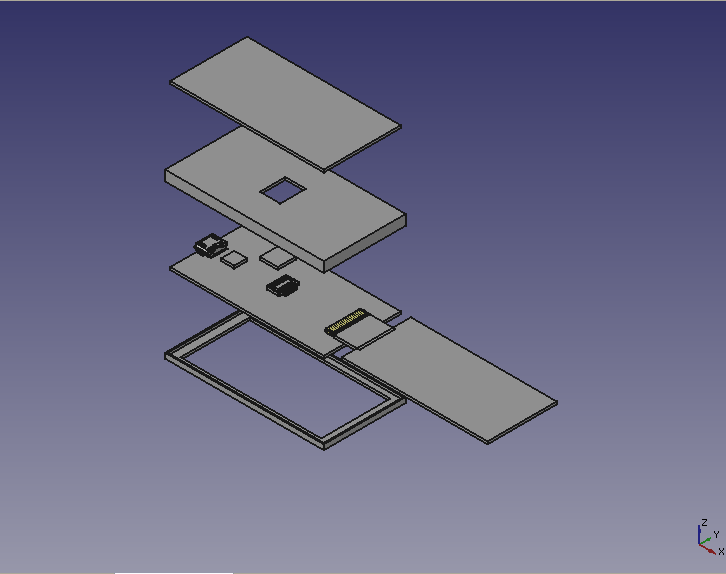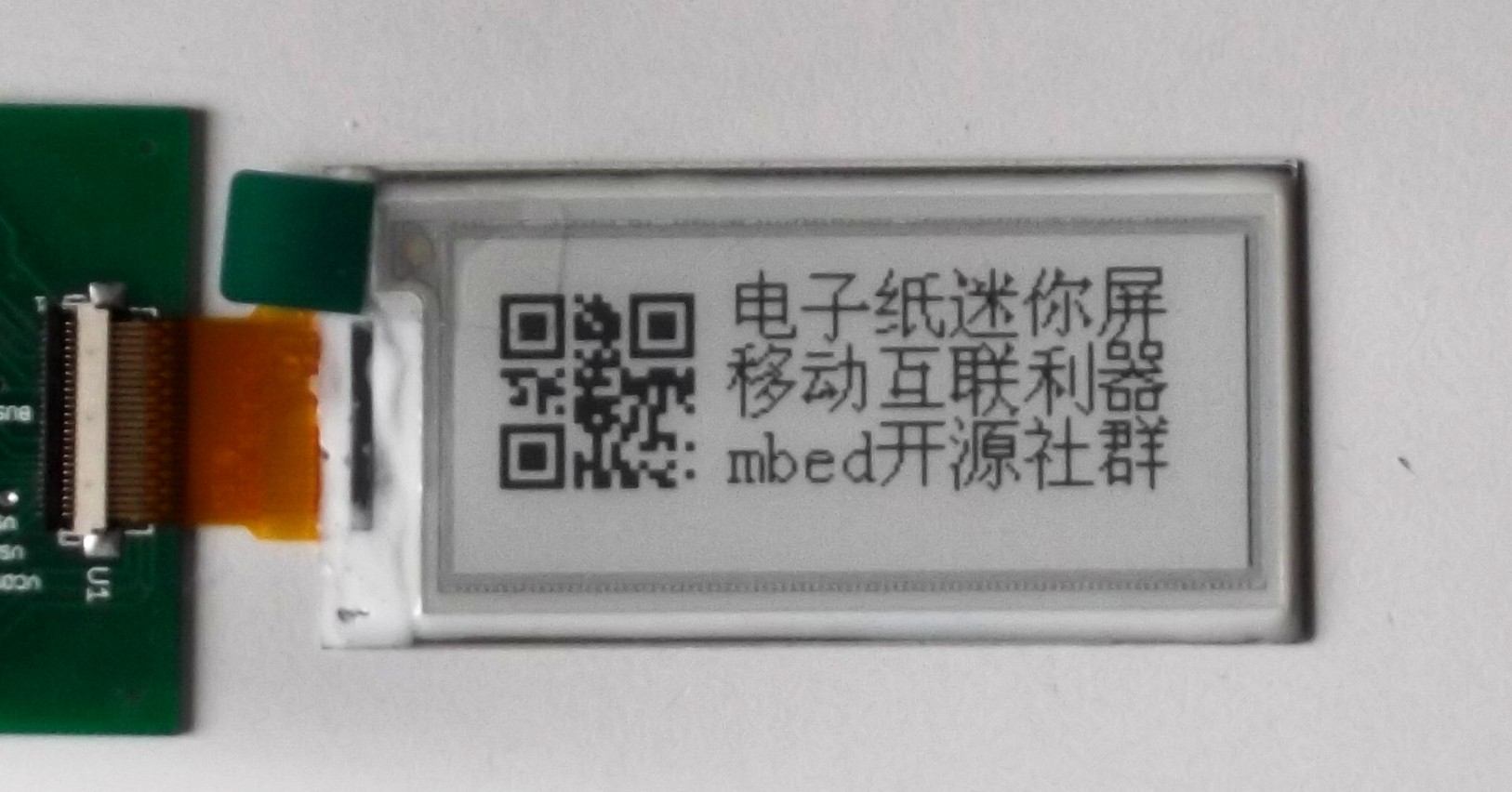E-Paper Device (EPD) based MiniNote module, powered by mbed on LPC1114FBD48. Shared in public domain with enclosure in 3D step format, hardware interface compatible with microBUS interface. Anyone can contribute on this project.
E Badge MiniNote Project
Readme¶
by Allan K Liu from Ennovation Technologies (Shanghai) LLC
mailto: allankliu(a)163.com
- http://blog.sina.com.cn/allankliu/ (Chinese blog)
- https://mbed.org/users/allankliu/ (mbed profile)
- http://github.com/allankliu/ (github source)
- http://allankliu.blogspot.com/ (English blog)
- http://ennovation.sinaapp.com/ (Chinese blog)
- https://www.tindie.com/stores/allankliu/ (online store)
What is E-Badge/MiniNote¶

E-Badge (or MiniNote) is E-Paper Device powered miniature display panel, which can be used in low power applications or even passive applications. As a trial to emerging market, we present it with following features:
- powered by leading edge low power EPD technology with 172*72 4 grey display
- powered by mbed online compiler and community support
- firmware programming with NXP micro without open the enclosure
- mobile oriented, APP support for Android USB host API
- embedded oriented, demo script for Raspberry Pi and other embedded Linux box
- cross platform support by Python script in Windows, Linux and Mac OS
- a complete ECAD+MCAD design, with enclosure in 3D step format
- hardware expansion by mikroBUS interface with more capabilities
Applications¶
EPD is an unique device. It is not suitable for all applications. However, in some applications, it has advantage over other display devices, like LCD and OLED.

QRCode is popular in internet applications, including payment, general information. EPD can dynamic change QRCode, while can keep it displayed without battery. That could be important in certain applications.
- second screen for Raspberry Pi or other Linux box, as slave
- employee badge with HF/UHF RFID
- aninal, kids and senior citizens tag
- luggage tag and object tracking
- O2O application token with QR code display
- public information notification
- electronics shelf label or price tag
- any applications require low power, long duration, lowrefresh rate display.
Why mbed¶
- simple C++ API designed for system integrator, designer, maker and geek.
- many off-the-shelf programs and libraries to reuse
- powered by ARM and its partners
- easy to share code
- a good window to expose/promote the product and designs
Why LPC1114¶
- mature Cortex-M0 microcontroller from NXP/ARM
- easy ISP download, compatible with Windows/Linux/Mac/Android
- reasonable resources (32KB ROM/8KB RAM) for small/medium applications
- DIP28 LPC1114 has many fans who may be interested in this project
- more powerful micro will be selected in case bigger display panel is used
LPC1114FDB48/30x vs LPC1114FDH28/20x¶
- mbed support LPC1114FN28/102 and LPC1114FDH28/102, which have only 4KB
- micro with more ROM/RAM (64KB+8KB) such as LPC1114Fnnnn/3xx or LPC1115, have not been supported by mbed.
- new target LPC1115 will be proposed to mbed to cover all designs.
mbed vs Keil¶
- mbed is online compiler, you can export the code to Keil MDK 4.xx
- Keil has 32KB lite version, you can debug the code in Keil with mbed CMSIS-DAP interface.
- code can be built for 4KB LPC1114 device, if you want to build with 8KB, export to Keil MDK, change its sct file to get it built.
mikroBUS shields¶
- mikroBUS is defined by mikroElektronika CZ.
- mikroE has designed many (about 100) mikroBUS shields.
- Arduino defines standard pinout in credit card size board, so it is much more successful than WIRING project, which is base of Arduino.
- consider mikroBUS as de facto shield pinout in mini boards, like Arduino does.
- Ebadge defines mikroBUS compatible interface with MOLEX slimstack board-to-board connector.
Contribution¶
- source code on mbed online compiler
- source code for Keil MDK, via github
- python scripts for Raspeberry Pi/Windows/Linux via github
- demo projects available via github
- 3D enclosure designs in step format, via github
- Android APP via github or app markets
- designers are welcome for enclosure designs
- artists are welcome to contribute for line art drawing, font and others
- programmers are welcome for firmware development
- mobile app developers are welcome for app innovation and cloud based applications
- consumers and buyers are highly welcome since you can support us to go on.
Plan¶
- plan for Ara project
- more mikroBUS shields for wearable designs
- a complete passive design with RFID/Qi charger
- BLE shield to communicate with iOS devices as well as APP
- a touch film interface with new micro and new bootloader
Availablity¶
- it will go to Kickstarter or indiegogo for cloud funding
- it will be available via tindie.com
- air mail shipment is limited in 3USD for single piece to EU/US